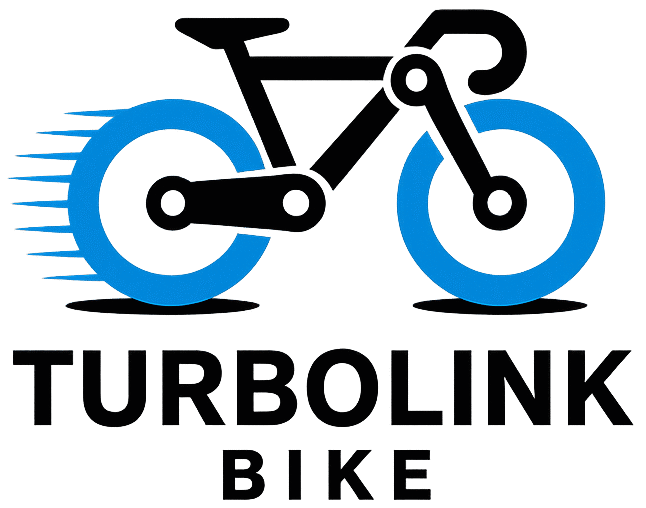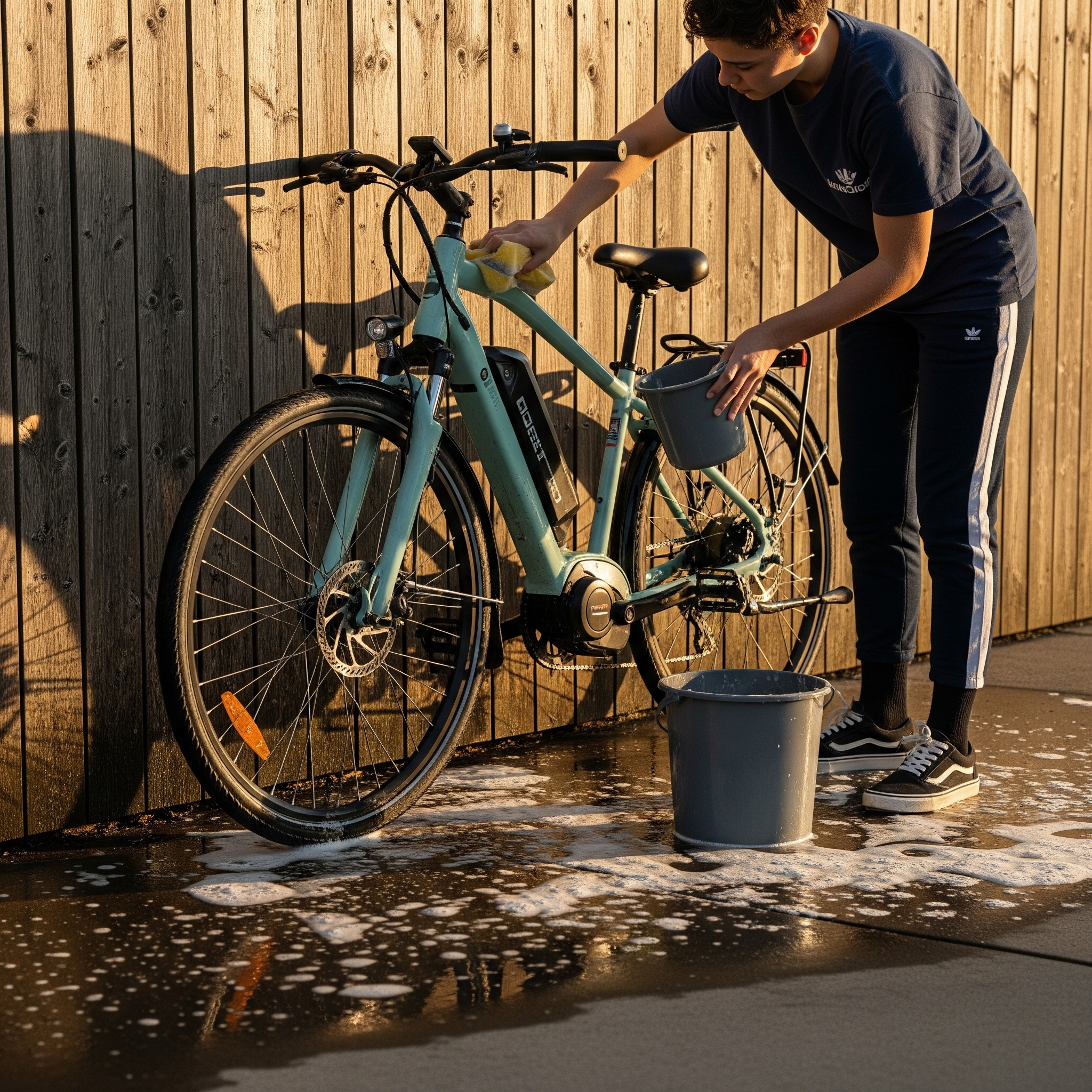The Ultimate Guide to Electric Bike Maintenance: Keep Your E-Bike Running Smoothl
Introduction: Why Electric Bike Maintenance Matters More Than You Think
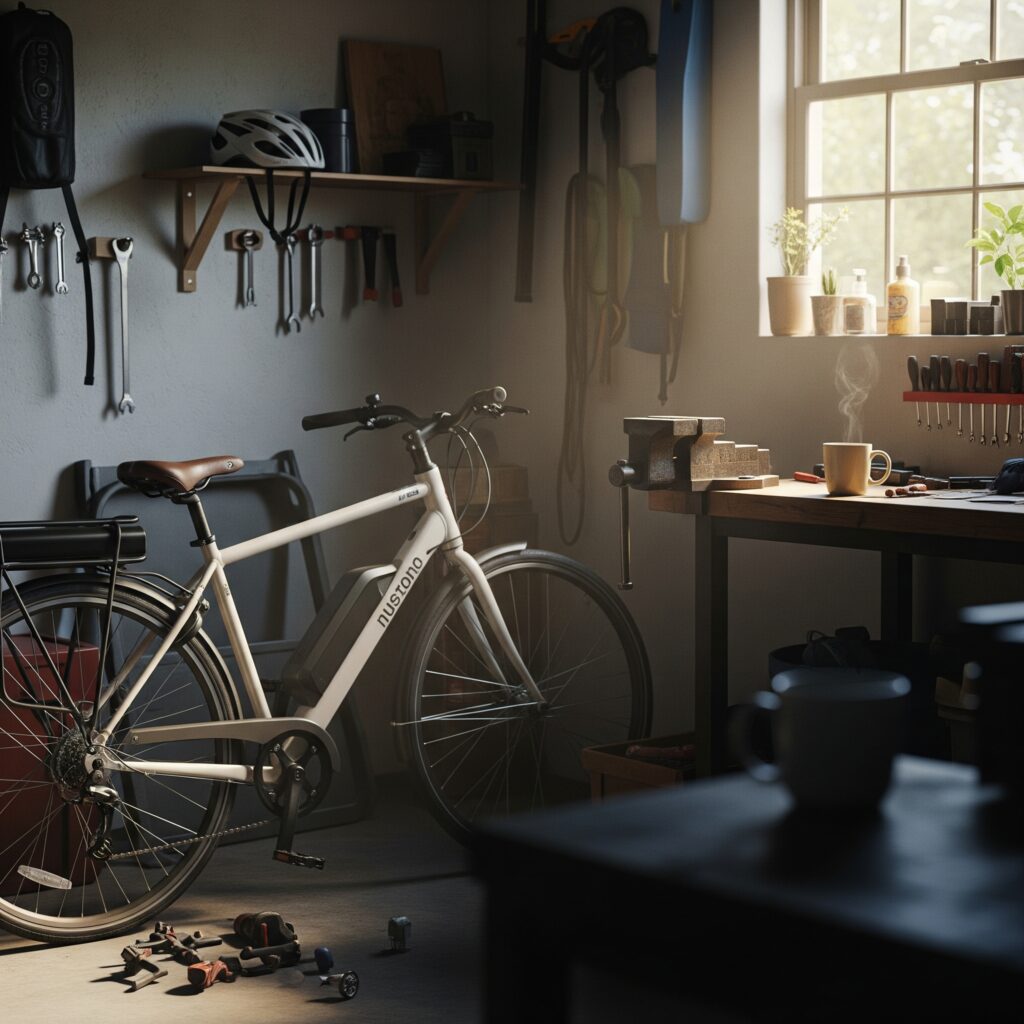
You’ve invested in an electric bike — not just for fun, but for freedom. Maybe it’s your daily commuter, weekend escape pod, or silent co-conspirator on uphill battles. Whatever your relationship with your e-bike looks like, one thing’s certain: routine electric bike maintenance isn’t optional — it’s essential.
Here’s the thing: unlike traditional bikes, e-bikes combine the worst of both worlds (in a good way). You’ve got the standard mechanical parts — chains, cogs, cables — plus a high-voltage electrical system. Neglect one side, and the other suffers too. Rusted chains can drain your battery faster. Misaligned brakes can compromise ride safety. A poorly maintained motor? That’s a costly mistake waiting to happen.
This guide is your preventative toolkit. No fluff, no gearhead jargon (unless we translate it). Just practical steps, real-world tips, and honest advice to help you:
- Spot issues before they become breakdowns.
- Keep your battery healthy for the long haul.
- Understand when you can DIY — and when you shouldn’t.
- Ride with the peace of mind that everything’s running as it should.
Let’s face it: most e-bike issues don’t announce themselves with neon signs. They sneak up. A faint clicking. A sluggish battery. A brake that pulls just a bit too hard. This guide helps you catch those whispers early — so you never have to hear the scream of a full breakdown.
You’re probably not trying to become a bike mechanic. That’s fine. You don’t have to be. But after reading this? You’ll know enough to ride smarter, safer, and longer — without second-guessing your gear.
Understanding Your E-Bike Components
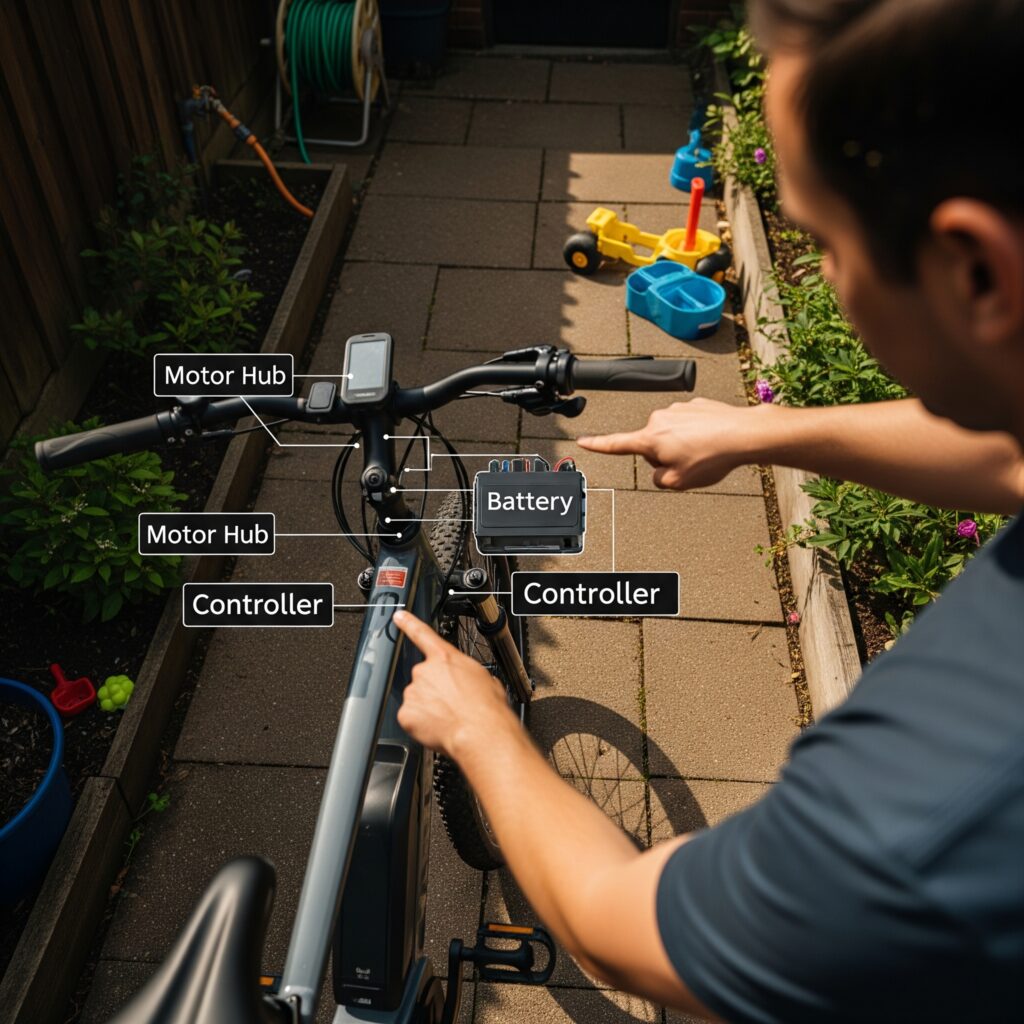
To keep your electric bike in top condition, you need to understand what you’re actually maintaining. E-bikes might look like regular bicycles at first glance, but under the hood (or more accurately, in the frame and hub), they pack a lot more tech. Knowing what each part does helps you spot problems early and take better care of your ride.
The “Smart” Side: Motor, Battery, and Controller
At the heart of your e-bike lies a delicate power triangle:
- Motor: Usually located in the hub or the crankset (mid-drive). This is what gives your legs that superhuman boost. Overheating, odd noises, or reduced power could signal a failing motor — and that’s not something you want to ignore.
- Battery: Think of it as your e-bike’s lifeline. Lithium-ion batteries are the norm, and while they’re resilient, they’re not immortal. Charging habits, storage temperature, and even how often you ride all impact battery life.
- Controller: The quiet brain of your e-bike. It regulates how much power goes from the battery to the motor based on your input. If your bike suddenly loses power or behaves erratically, this could be the culprit.
These components are interconnected. A glitch in one often affects the others — which is why a basic understanding helps prevent small issues from snowballing.
The “Classic” Bike Bits That Still Matter
Electric or not, your bike still has all the traditional moving parts:
- Drivetrain (chain, cassette, crankset): Needs regular cleaning and lubrication. A dirty drivetrain isn’t just inefficient — it can wear out faster and strain your motor.
- Brakes (rim or disc): E-bikes tend to be heavier and faster, so brake wear happens quicker. Squeaks, soft pulls, or slower stopping times = time for a check-up.
- Tires and Wheels: More torque means more pressure on tires. Regular pressure checks, visual inspections, and occasional truing (wheel alignment) go a long way.
And let’s not forget:
- Suspension (if you have it): Adds comfort but also complexity. A neglected suspension fork can turn a smooth ride into a shoulder-jarring mess.
- Frame and Cables: Visual inspection for cracks, rust, or frayed wires can catch damage before it turns critical.
How do I know if a component is failing?
Watch for these signs:
- Sudden drop in power or range.
- Unusual noises (grinding, clicking, or humming).
- Loose components or inconsistent braking.
- LCD display flashing error codes (often overlooked but very telling).
Regular Maintenance Schedule for Electric Bikes
Let’s be honest: few riders actually enjoy the maintenance side of biking. But when it comes to e-bikes, skipping your tune-ups can get expensive — fast. A quick 10-minute inspection can save you from a $500 motor replacement or a battery that dies two years too soon. The key? Making maintenance routine, not reactive.
Below is a practical schedule — not too nerdy, not too vague — to keep your e-bike humming.
Daily / Before Every Ride
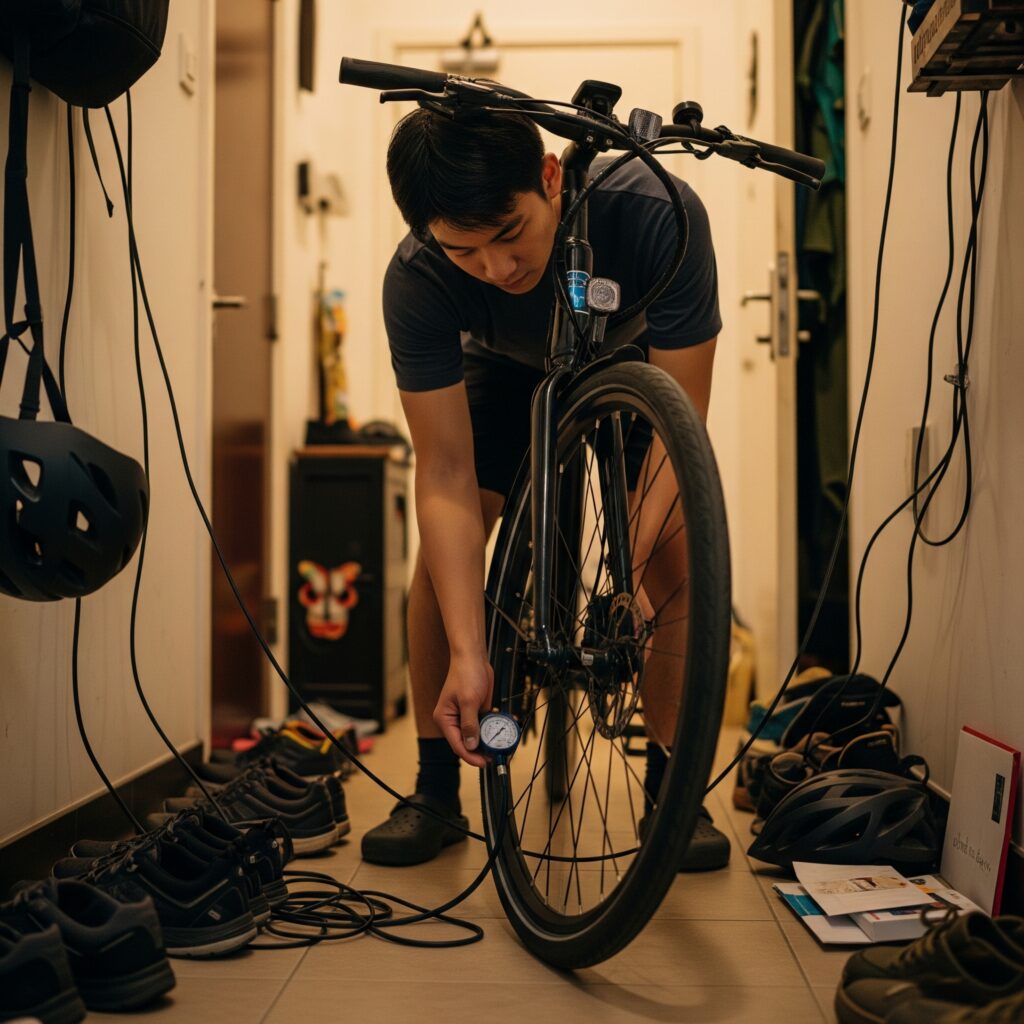
These are your “coffee break checks” — quick and easy.
- Check tire pressure (use a gauge, not your thumb — you’ll be surprised).
- Inspect the brakes: Are they responsive? Any strange noises?
- Look over the drivetrain: Any obvious grime or rust?
- Battery level: Make sure it’s charged enough for your trip.
- Cables and connectors: Nothing dangling or fraying?
Spending two minutes here can prevent mid-ride surprises (like your front brake giving out on a hill — ask me how I know).
Weekly Tasks
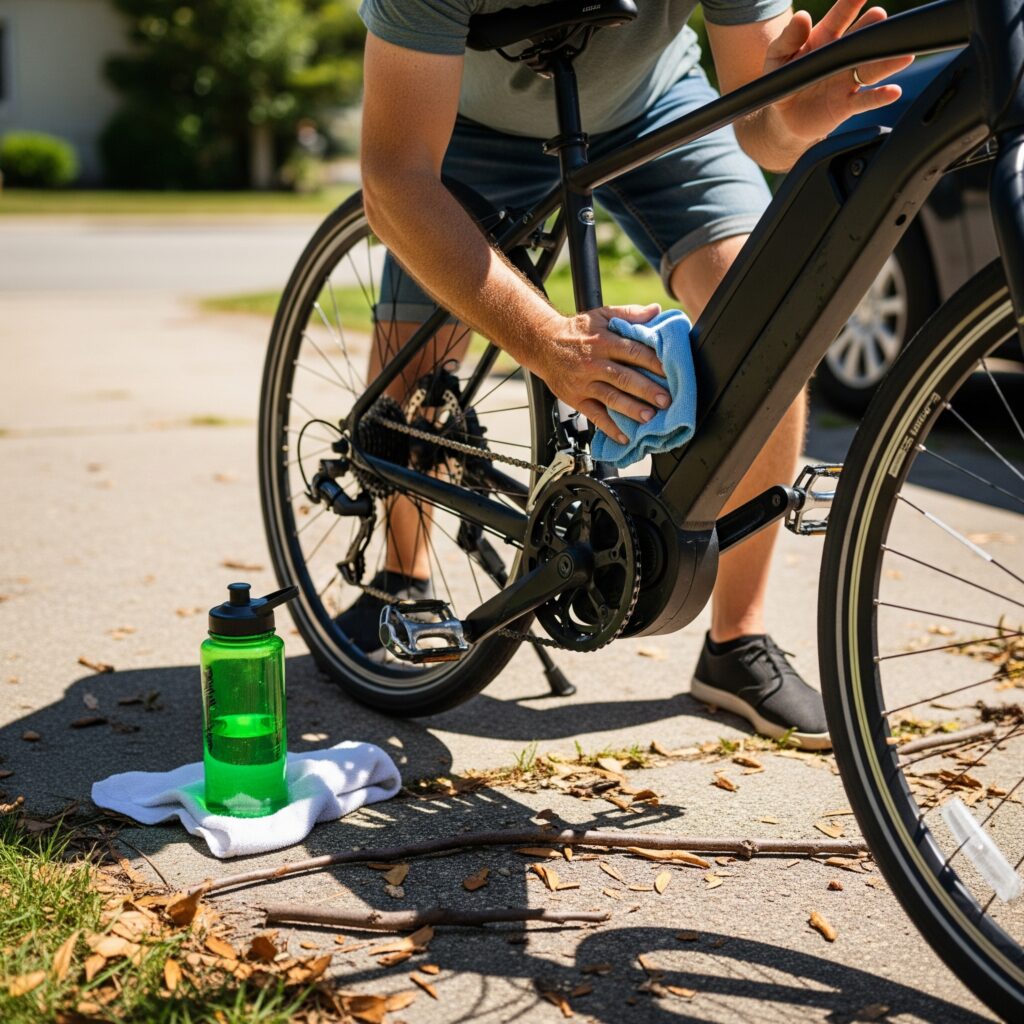
This is your Sunday ritual — even if you only rode once that week.
- Wipe down the frame and key components.
- Clean and lightly lube the chain (dry lube if dusty, wet lube if rainy).
- Check tire wear and sidewall cracks.
- Inspect bolts and screws: Anything loose gets tightened.
- Test the throttle and pedal assist settings.
Monthly Maintenance
Get more hands-on here — or schedule a shop visit if you’re unsure.
- Deep clean the drivetrain (cassette, chainrings, derailleur).
- Inspect brake pads and rotors for wear or warping.
- Check battery terminals for corrosion or grime.
- Update software/firmware if your e-bike app or system supports it.
- Inspect motor casing and mounts for cracks or misalignment.
Seasonal / Every 6 Months
Especially critical if you ride year-round or in rough conditions.
- Full tune-up: Adjust gears, tension cables, align wheels.
- Inspect wiring harnesses: Look for wear from movement or weather.
- Suspension service (if applicable): Clean seals, check air pressure.
- Battery deep health check: Some shops offer diagnostics.
What happens if I skip maintenance for a few months?
Short answer? You’ll probably be fine — until you’re not. Most issues are cumulative. Skipping one chain lube session won’t kill your bike, but doing it all season? Expect reduced range, excessive wear, and possibly a stranded ride. Preventative care is cheaper (and way less annoying) than repairs.
Battery Care and Optimization for E-Bikes

If your e-bike’s motor is the muscle, the battery is its heart. And like any heart, neglect it… and you’ll feel the consequences — in lower range, inconsistent power, or worst-case, a dead ride. Good news? With smart habits, you can easily extend your battery’s life by years.
Charging Habits That Actually Matter
Here’s where most people mess up: they treat their e-bike battery like a phone. Plug it in overnight, leave it full, ignore the charger type — rinse, repeat. But lithium-ion batteries don’t play nice with lazy habits.
- Avoid 100% full charges every time: Ideally, keep your battery between 30%–80% for daily use. Full charges are fine occasionally, but constant topping off strains the cells.
- Don’t drain to zero: Complete discharges reduce your battery’s long-term capacity. If your e-bike hits 5%, plug it in soon.
- Use the original charger: Generic ones may not regulate current properly, leading to overheating or uneven charging.
- Let it cool before charging: After a ride, give the battery 30–60 minutes to rest before plugging in.
Storage Tips Most Manuals Gloss Over
Where and how you store your battery affects its lifespan more than you think.
- Avoid extreme temperatures: Batteries hate both freezing cold and blistering heat. Store indoors, between 10–25°C (50–77°F) if possible.
- If storing long-term: Don’t leave the battery fully charged or empty. Aim for 50–70% charge and top it up every 1–2 months.
- Detach when not riding: For e-bikes stored outdoors, remove the battery to protect it from moisture and theft.
Signs Your Battery Might Be Fading
Like us, batteries age. But they rarely go all at once. Watch for:
- Noticeable drop in range
- Inconsistent power delivery or cutouts
- Battery gets hot when charging or in use
- Increased charging time
If you spot two or more of these, your battery might be nearing retirement.
Can I replace my e-bike battery myself?
Technically, yes. But compatibility, voltage matching, and safety risks make it tricky. Unless you’re confident with electronics, it’s safer to go through your e-bike brand or a certified shop. DIY replacements can void warranties or damage your motor/controller if mismatched.
Drivetrain Maintenance for E-Bikes
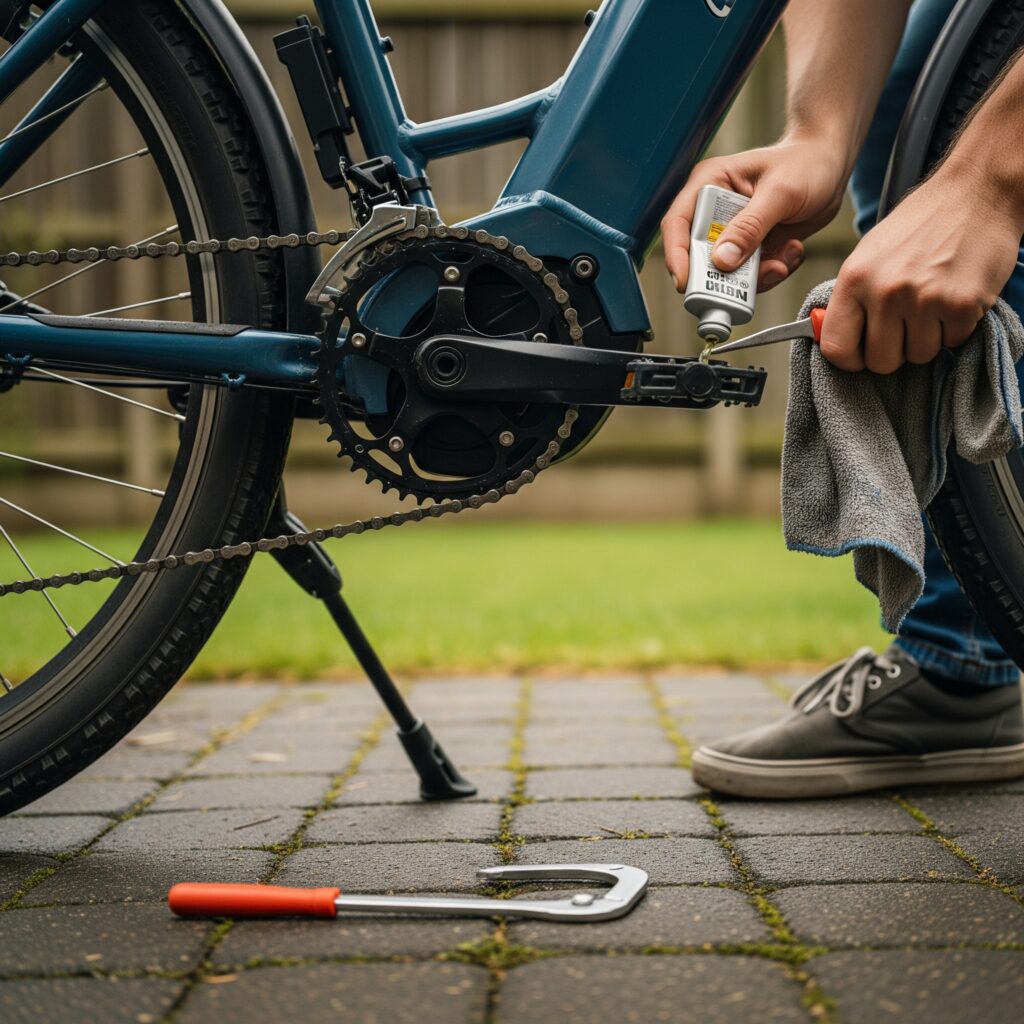
Your e-bike’s drivetrain is like the chain of command — literally. It’s the set of parts that transfers your pedaling power (plus the motor’s boost) into forward motion. And because e-bikes push more torque than traditional bikes, their drivetrains wear faster and demand a bit more TLC.
If you’ve ever felt your chain skip under pressure or heard that awful grinding sound mid-ride, you’ve probably already met a neglected drivetrain. Let’s fix that.
Keep It Clean, Keep It Quiet
Think of your chain and cassette like a zipper. If dirt and gunk get stuck in the teeth, the whole thing jams.
Here’s your routine:
- After wet or dusty rides: Wipe the chain with a dry cloth.
- Weekly: Use a degreaser to clean the chain, chainrings, and cassette.
- Dry completely, then apply a suitable bike-specific lubricant (not WD-40 — that’s for door hinges).
💡 Pro tip: Spin the pedals backward and wipe away excess lube. More isn’t better — it just attracts dirt.
Spotting Wear Before It Hurts You (or Your Wallet)
E-bike chains stretch. That’s not just a saying — they literally elongate over time due to pressure. And a stretched chain can chew through your cassette and chainrings faster than you’d think.
- Use a chain wear gauge monthly. If it reads 0.5%–0.75% stretch, time for a new chain.
- Check cassette teeth: If they look like shark fins instead of rounded notches, they’re worn.
- Feel for skipping: If your bike stutters under load, your drivetrain might not be meshing cleanly.
Replacements: How Often and What It Costs
- Chain: Every 700–1,000 miles for high-assist e-bikes. Less if you’re meticulous with cleaning.
- Cassette: Usually lasts 2–3 chains if you replace on time.
- Chainrings: Can last thousands of miles, but once they’re worn, shifting gets sloppy.
Expect to pay:
- ~$25–50 for a quality chain
- ~$40–100 for a cassette
- ~$50+ for a chainring
DIY installation is possible with a chain tool and cassette remover, but don’t force it if you’re unsure — misalignment can cause even more wear.
Can I use a regular bike chain on my e-bike?
You can, but you probably shouldn’t. E-bike chains are designed to handle higher torque and wear. Regular chains may stretch or snap faster, especially on mid-drive motors. Stick with e-bike-rated parts — your drivetrain (and wallet) will thank you.
Brake System Checks for E-Bikes
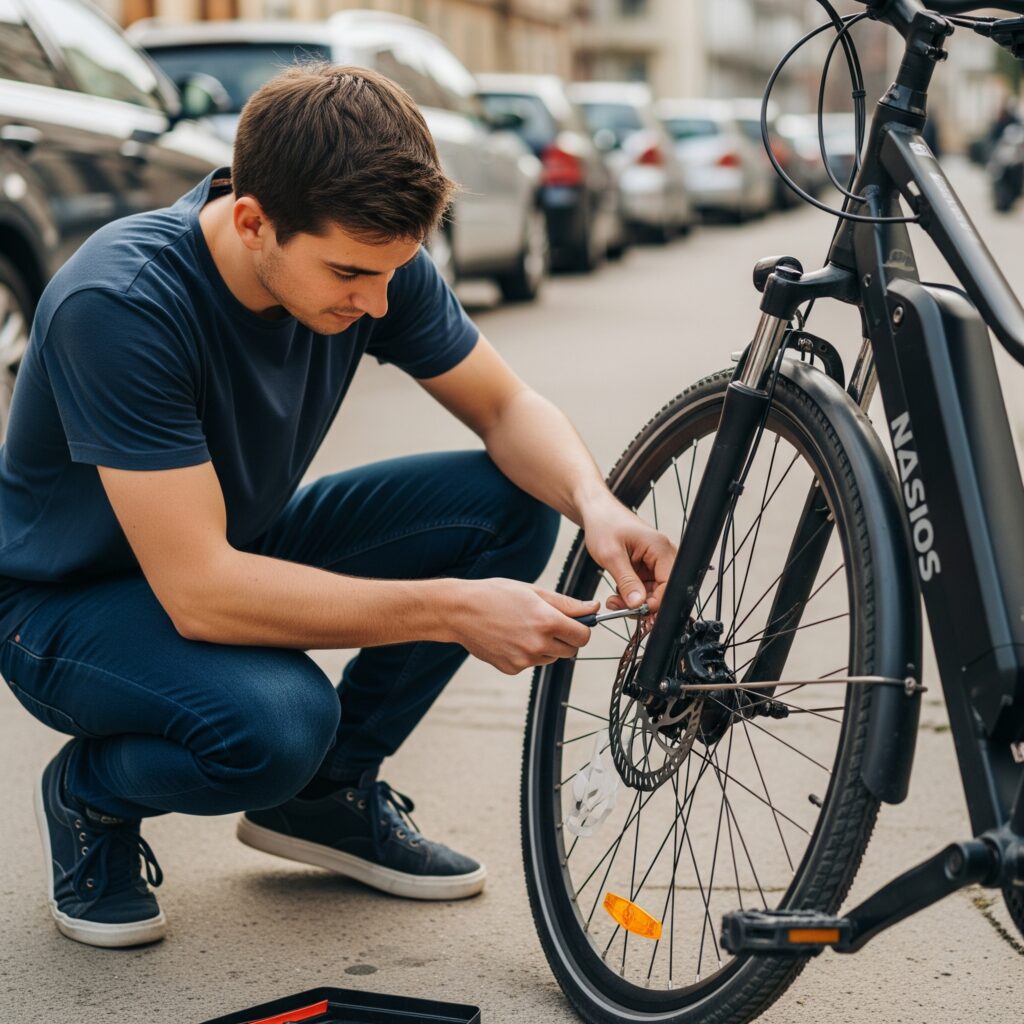
E-bikes go faster, weigh more, and stop harder than your average pedal-only bike — which means your brakes are doing a lot more work than you might think. And yet, they’re often the most neglected part of maintenance.
Until one day… they squeal. Or worse, they don’t.
Let’s walk through what good brake health looks like — and how to keep your stopping power strong.
Understanding Your E-Bike Brakes
Most modern e-bikes come with:
- Hydraulic disc brakes (superior stopping, less maintenance)
- Or mechanical disc brakes (easier to fix, more frequent tuning)
Some entry-level models still use rim brakes, but they’re becoming rare in the e-bike world — mostly because they can’t handle the weight and speed as well.
No matter the type, your brakes depend on:
- Pad material and thickness
- Rotor condition
- Cable or fluid tension
- Caliper alignment
Miss one, and your braking becomes uneven, noisy, or dangerously weak.
How to Check Your Brakes (Without a Mechanic)
Every couple of rides, do a quick inspection:
- Squeeze both levers: They should feel firm and activate without delay.
- Look at your brake pads: If you see less than 1.5mm of pad left, replace them.
- Check the rotors: Are they smooth and flat? Warped rotors lead to vibration and pulsing.
- Listen for sounds: Squealing = contamination. Grinding = metal-on-metal (bad news).
💡 Pro tip: If your brakes sound wet or sharp, clean the rotors with isopropyl alcohol — not soapy water.
When to Adjust or Replace
- Hydraulic brakes: If the lever feels “mushy,” you may need a brake bleed (flush out old fluid and air bubbles). Recommended every 6–12 months.
- Mechanical brakes: Adjust cable tension and check for frayed wires or corroded housing.
- Pad replacement: Usually every 500–1,000 miles, but sooner if you ride in wet, gritty conditions.
💸 Expect to pay:
- ~$15–30 for new pads
- ~$20–40 for rotor replacement
- ~$60–100 for a full hydraulic brake bleed (at a shop)
How do I know if my e-bike brakes are about to fail?
Watch for:
- Squishy or inconsistent lever feel
- Long stopping distances
- Screeching, scraping, or pulsing under braking
- Visible pad wear or shiny (glazed) pads
If in doubt, stop riding and get them checked. Brake failure on an e-bike isn’t just inconvenient — it’s dangerous.
Tire and Wheel Upkeep for E-Bikes
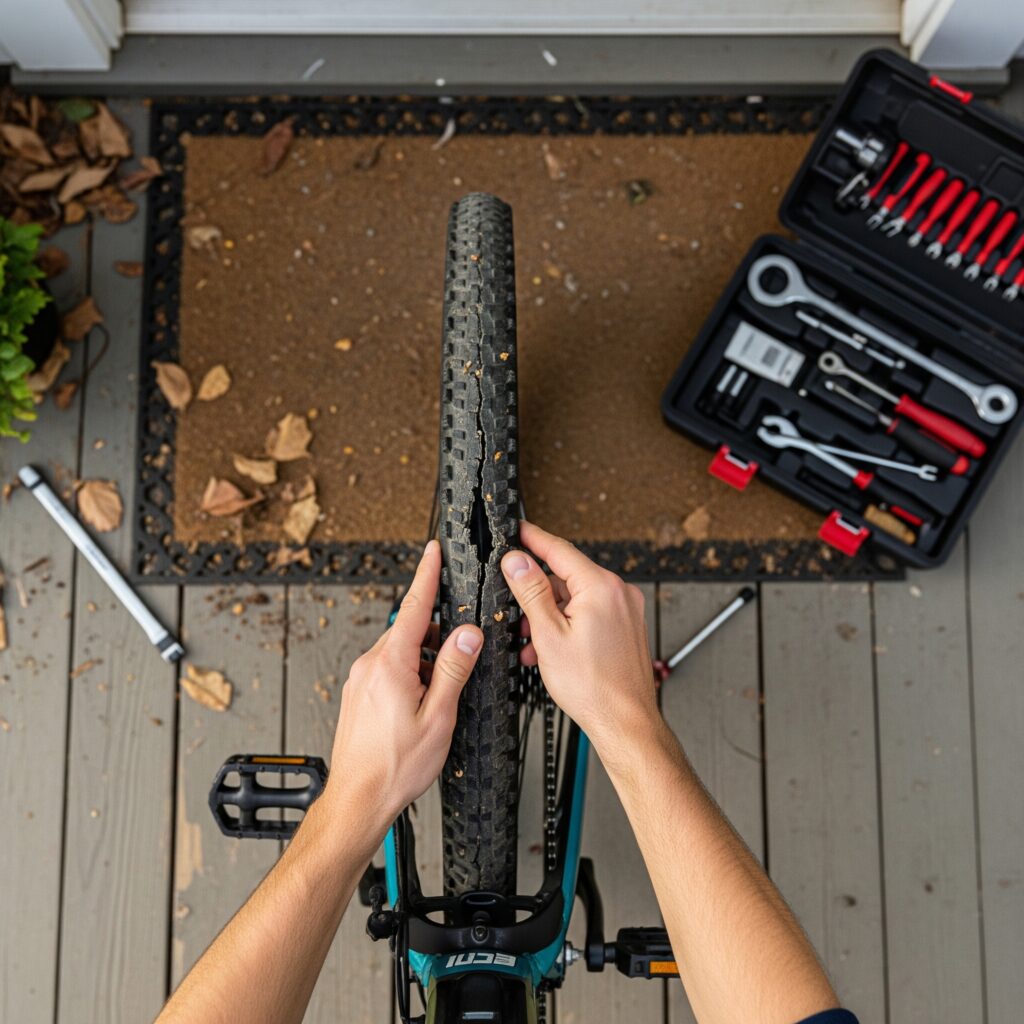
Your tires are the only contact point between you and the ground. Multiply your bike’s weight by the motor’s power, and you’ve got a lot riding on some pretty thin rubber. E-bike tires wear out faster, and wheels take more punishment — especially if you’re commuting on pothole-laced roads or tackling off-road trails.
Neglect them, and it’s not just a flat tire you risk — it’s your traction, control, and ultimately, your safety.
Tire Pressure: The Silent Performance Killer
Underinflated tires don’t just feel sluggish — they strain your battery, mess with your handling, and wear out unevenly.
- Check pressure weekly: Most e-bike tires range between 40–70 PSI, but check your sidewall for specifics.
- Use a gauge, not guesswork. Thumb-press tests lie.
- Adjust based on load: Heavier riders or gear? Slightly more pressure. Wet roads? Slightly less for grip.
💡 Pro tip: Some e-bikes use puncture-resistant tires with thicker walls — they need a bit more PSI than standard ones.
Tire and Wheel Upkeep for E-Bikes
Your tires are the only contact point between you and the ground. Multiply your bike’s weight by the motor’s power, and you’ve got a lot riding on some pretty thin rubber. E-bike tires wear out faster, and wheels take more punishment — especially if you’re commuting on pothole-laced roads or tackling off-road trails.
Neglect them, and it’s not just a flat tire you risk — it’s your traction, control, and ultimately, your safety.
Tire Pressure: The Silent Performance Killer
Underinflated tires don’t just feel sluggish — they strain your battery, mess with your handling, and wear out unevenly.
- Check pressure weekly: Most e-bike tires range between 40–70 PSI, but check your sidewall for specifics.
- Use a gauge, not guesswork. Thumb-press tests lie.
- Adjust based on load: Heavier riders or gear? Slightly more pressure. Wet roads? Slightly less for grip.
💡 Pro tip: Some e-bikes use puncture-resistant tires with thicker walls — they need a bit more PSI than standard ones.
Tire Wear and Damage Check
Every few rides, scan for:
- Cracks on the sidewalls (especially if your bike’s stored outdoors)
- Bald spots or flattening down the center
- Embedded glass, nails, or thorns (even tiny ones can cause slow leaks)
- Uneven wear (could indicate poor inflation or a misaligned wheel)
Most e-bike tires last around 1,000–2,500 miles, depending on terrain and riding style.
Wheel Trueness and Spoke Tension
E-bikes exert more torque on wheels, which means spokes can loosen over time. Left unchecked, this leads to a wobbly rim — or worse, a cracked one.
Check monthly:
- Spin each wheel and look for lateral “wobble”
- Tap spokes — they should all have a similar tension “ping”
- Feel for looseness at the axle or hub
If anything seems off, don’t wait. A small alignment job is cheap. A buckled wheel? Not so much.
💸 Expected costs:
- New e-bike-rated tire: $35–90
- Tube (if not tubeless): ~$10
- Wheel truing: ~$20–40 at a shop
Should I switch to tubeless tires on my e-bike?
Tubeless setups reduce flats and can offer a smoother ride — but they’re not for everyone. They require more precise installation and ongoing sealant checks. If you ride off-road or long distances, they’re worth considering. For casual commuters? Traditional tubes might be simpler.
Cleaning Your E-Bike Safely (Without Ruining It)
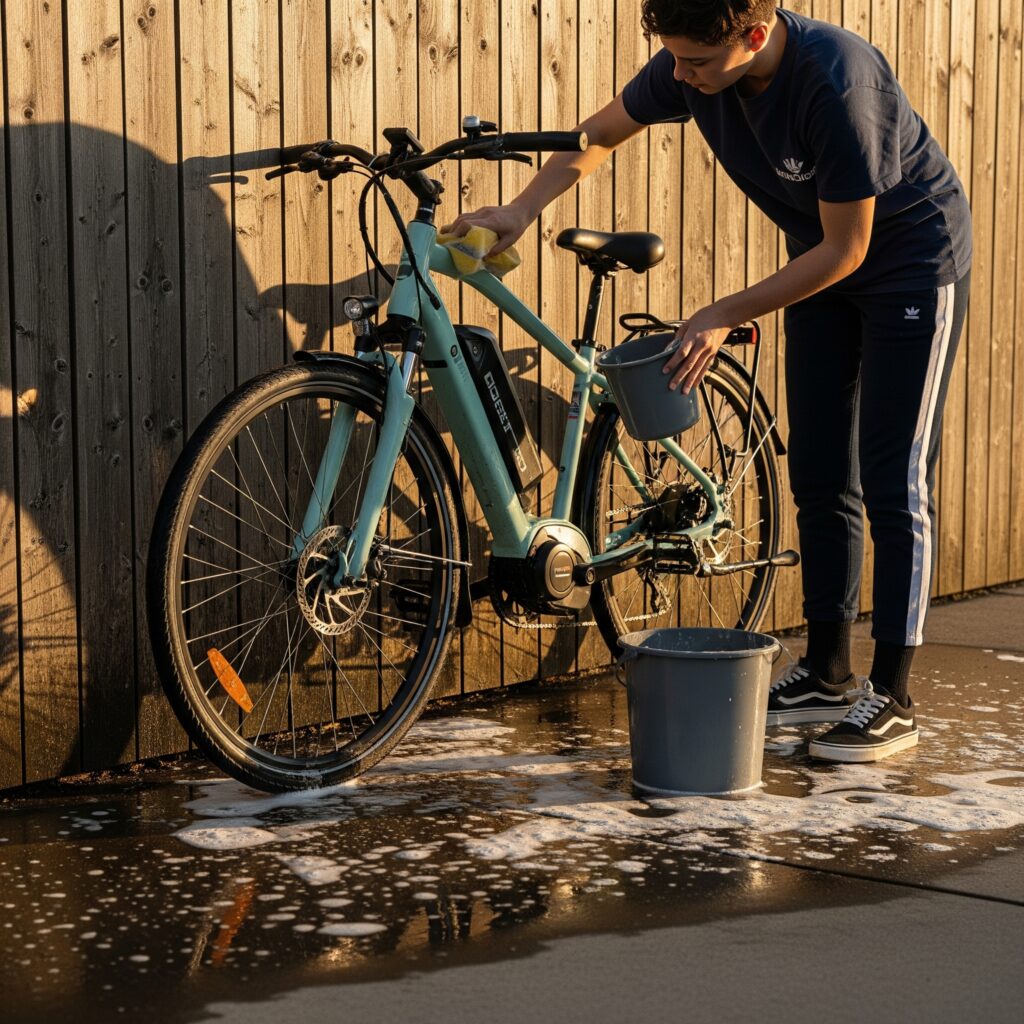
Let’s get this out of the way: you can’t treat an electric bike like a regular bike when it comes to cleaning. Sure, it’s tempting to grab the garden hose and blast the mud off — but doing that is a great way to fry your motor, short your controller, or cause electrical gremlins you won’t notice until it’s too late.
But here’s the good news: keeping your e-bike clean is easier (and safer) than you think — if you know where to scrub and where to steer clear.
What to Use (And What to Avoid)
Use:
- A bucket of warm, soapy water (mild dish soap is fine)
- Soft sponge or microfiber cloth
- Bike-specific degreaser for drivetrain
- Soft-bristled brush for caked-on grime
Avoid:
- Pressure washers — seriously, don’t.
- Harsh chemicals (they can damage paint or rubber seals)
- Direct water spray on the motor, display, or battery housing
💡 Tip: Treat your e-bike like a laptop with wheels. You wouldn’t spray your MacBook with a hose — don’t do it to your motor.
The Safe Cleaning Routine
- Remove the battery (if removable) and store it somewhere dry.
- Dry brush off loose dirt first.
- Sponge clean the frame and fork — avoid getting water near charging ports or motor joints.
- Degrease drivetrain separately — use a brush and degreaser, then wipe dry before lubing.
- Rinse lightly using a damp cloth — not a running hose.
- Dry thoroughly — especially around connectors, motor mounts, and inside fenders.
- Re-lube the chain after everything’s dry.
Don’t rush. A 15-minute wipe-down does more for your bike’s longevity than a dozen expensive tune-ups.
Post-Wash Sanity Checks
- Reconnect the battery and power it up — watch for display errors or flickering.
- Test brakes and shifting — water can cause temporary stiffness.
- Lube chain after washing, not before (water strips oil fast).
Can I clean my e-bike in the rain?
You can ride in the rain — but cleaning in the rain? Risky. Controlled indoor or shaded spaces are better. Rain introduces uncontrolled water spray into connectors and housings. If you must, focus on wiping down after the ride, not full-on washing outdoors.
Software and Firmware Updates for E-Bikes

Your e-bike isn’t just pedals and gears — it’s a rolling computer. Beneath the frame is software that tells the motor when to kick in, how much torque to deliver, and how to respond to your pedal cadence. And like any tech, that software evolves.
Ignoring firmware updates is like riding with a map from 2015. You might get where you’re going, but you’ll miss out on smoother routes, improved performance, and important bug fixes.
What Software Actually Controls
Depending on your e-bike model, the software governs:
- Motor responsiveness (acceleration, torque curves)
- Battery management system (BMS) for efficiency and protection
- Pedal assist behavior (PAS levels and how they behave)
- Throttle sensitivity
- Error reporting and diagnostics
Updates can tweak all of this — sometimes subtly, sometimes dramatically. Some brands even roll out new features over-the-air.
How to Check and Perform Updates
There’s no one-size-fits-all, but here’s the general breakdown:
- Smart e-bikes (Bosch, Shimano STEPS, Specialized, etc.):
- Use the official app (e.g., e-Tube, Mission Control, Bosch Flow).
- Connect via Bluetooth.
- Look for a “Firmware” or “System Update” tab.
- Follow in-app instructions.
- Non-app e-bikes:
- Visit the brand’s website — some require USB or dealer-based updates.
- Email or call support to ask if your firmware is current.
- In some cases, your local bike shop must handle it.
💡 Pro tip: Always fully charge your battery before performing an update. A power cut mid-process can brick your controller.
Why It’s Worth the Effort
Riders often skip updates, thinking “if it’s working, why mess with it?” But here’s what you might miss:
- Smoother pedal assist transitions
- Bug fixes for known issues (e.g., range drops or phantom errors)
- Battery life optimization
- Improved compatibility with accessories or apps
What happens if I ignore e-bike software updates?
Sometimes? Nothing. Other times? You’ll miss crucial optimizations or let small glitches snowball. It’s like skipping oil changes on a car that seems fine — eventually, you’ll notice. Regular updates protect your investment and make riding better.
Storage and Transportation Tips for E-Bikes
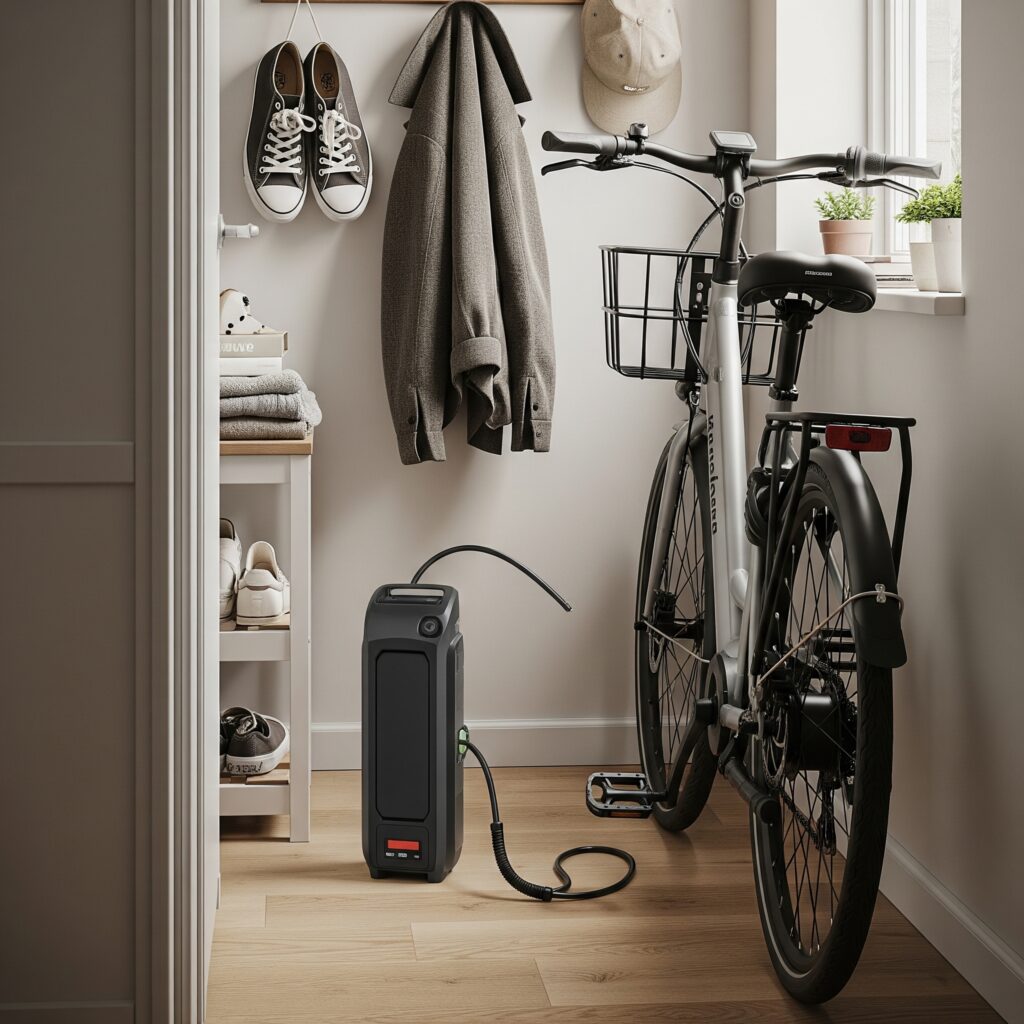
Your e-bike doesn’t just need care while it’s moving — how and where you store it when it’s idle is just as critical. Whether it’s a weekend break or seasonal hibernation, improper storage can ruin a perfectly good battery, warp your wheels, or expose sensitive electronics to moisture and rust.
And don’t even get us started on sketchy transport racks and bumpy road trips.
Here’s how to keep your ride safe, charged, and ready — no matter how long it’s parked or where it’s going.
Indoor vs. Outdoor Storage
Let’s be blunt: outdoor storage is a last resort.
- Ideal scenario: Indoors, climate-controlled, dry, and away from direct sunlight. A garage, apartment hallway, or bike room is best.
- If outdoors:
- Use a high-quality waterproof cover (UV-resistant, not just plastic sheeting).
- Remove the battery and bring it indoors.
- Elevate the bike slightly to avoid standing water.
💡 Warning: Cold kills batteries. Even if you can’t store the whole bike inside, always bring the battery in below freezing temps.
Long-Term Battery Storage Tips
If you’re parking your e-bike for winter or an extended break:
- Charge the battery to ~60% — not full, not empty.
- Store it indoors around 15–25°C (59–77°F).
- Top off every 1–2 months to prevent deep discharge.
Never leave a fully charged or fully drained battery in storage — both accelerate cell degradation.
Transporting Your E-Bike (Without Breaking It)
Moving your e-bike isn’t the same as hauling a regular bike. E-bikes are heavier, more fragile in the wrong spots, and full of electronics that don’t like vibration.
Transport tips:
- Use a rack rated for e-bikes — standard racks can’t handle the weight.
- Always remove the battery before loading.
- Secure the frame tightly, avoiding pressure on the motor or display.
- Cover connections and display if you’re driving through rain or dirt.
For car interiors:
- Lay the bike on the non-drive side (chain facing up) to protect drivetrain components.
Flying with your e-bike? Check airline policies. Most won’t allow lithium-ion batteries in cargo — you’ll need to ship the battery separately or rent one at your destination.
Can I store my e-bike vertically to save space?
You can — but only if the manufacturer says it’s okay. Vertical storage can stress suspension, tires, or even the motor mount depending on the design. Always check the manual, and never store an e-bike battery end-up or upside-down.
Troubleshooting Common E-Bike Issues
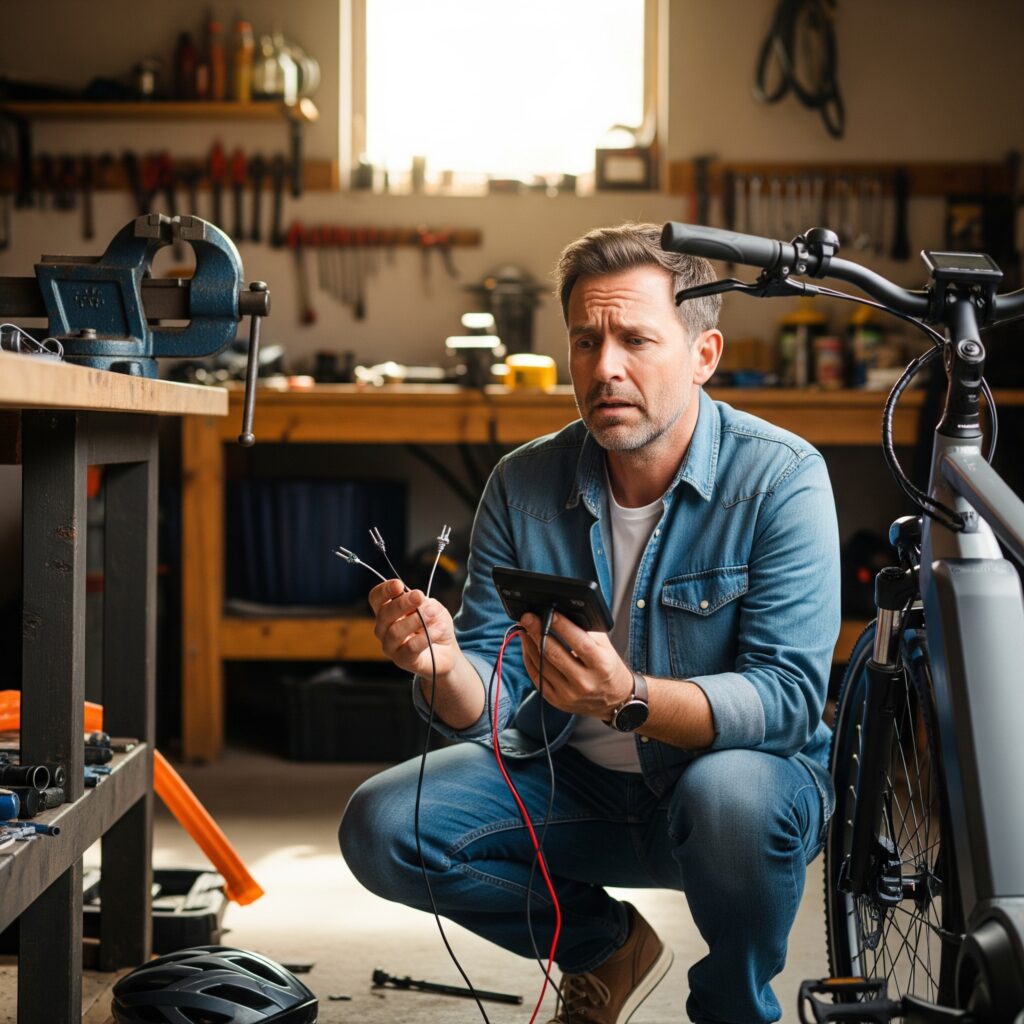
Even with perfect care, e-bikes occasionally act up. A glitchy display. A motor that won’t kick in. A sudden loss of power. These moments are inevitable — but panic doesn’t have to be.
The key is knowing which problems you can safely fix yourself… and which ones need a pro. Let’s break down the most common electric bike issues and how to handle them without losing your cool (or your weekend).
E-Bike Won’t Turn On
This one hits hard — especially if you’re already running late.
Checklist:
- Is the battery properly connected and charged?
- Are the power button and display responsive?
- Try removing and reseating the battery — sounds basic, but it often works.
- Check the fuse (some bikes have inline fuses or fuse blocks).
- Still no luck? Could be a blown controller or wiring issue — time to call a tech.
Motor Not Engaging or Cutting Out
Riding… riding… then nothing.
Try this:
- Inspect your pedal assist sensor — dirt or misalignment can confuse the system.
- Throttle not responding? Loose cable or faulty connection is likely.
- Error codes on display? Check the manual or app — they usually point to the issue.
- Check magnet placement if using a cadence-based PAS system. A shifted magnet = no motor help.
Reduced Range or Battery Draining Too Fast
Before you blame the battery, consider:
- Cold weather can slash range by 30% or more.
- Tire pressure too low? That adds rolling resistance.
- Motor dragging due to mechanical resistance?
- Old chain or dirty drivetrain? Adds friction and drains power.
If your range is tanking consistently, your battery might be aging out — most degrade after 500–800 full charge cycles.
Display Glitches or Error Messages
- Try a system reset (some bikes have a hidden reset combo — check the manual).
- Check all cable connections, especially at junction boxes.
- If you see error codes, Google them or check your brand’s support site — most are standard (like E10 = communication error).
When should I take my e-bike to a shop?
Here’s a good rule of thumb: If it involves cutting wires, opening sealed components, or guesswork near the battery, go pro. Shops have diagnostic tools and firmware access that the average rider doesn’t. Better safe (and under warranty) than sorry.
Conclusion: Keep Your E-Bike Rolling Strong
Let’s be real — owning an e-bike is part joyride, part responsibility. Sure, the smooth assist on a steep hill feels like magic, but that magic is mechanical. And electrical. And very real.
The truth is, electric bike maintenance isn’t about being a gearhead. It’s about protecting your investment, avoiding mid-ride meltdowns, and keeping that grin on your face when the pedal assist kicks in just right. With a little attention — some regular chain checks, a mindful eye on battery health, and the occasional software update — you’ll keep your e-bike performing at its best, for longer.
You don’t have to master it all overnight. Just start with the basics. Add a routine. Stay curious. The rest will follow — just like your shadow on a long, effortless ride home.
If you ever hit a snag, this guide’s here. And if you’ve made it this far? You’re already the kind of rider who takes care of their gear — and that puts you miles ahead.
